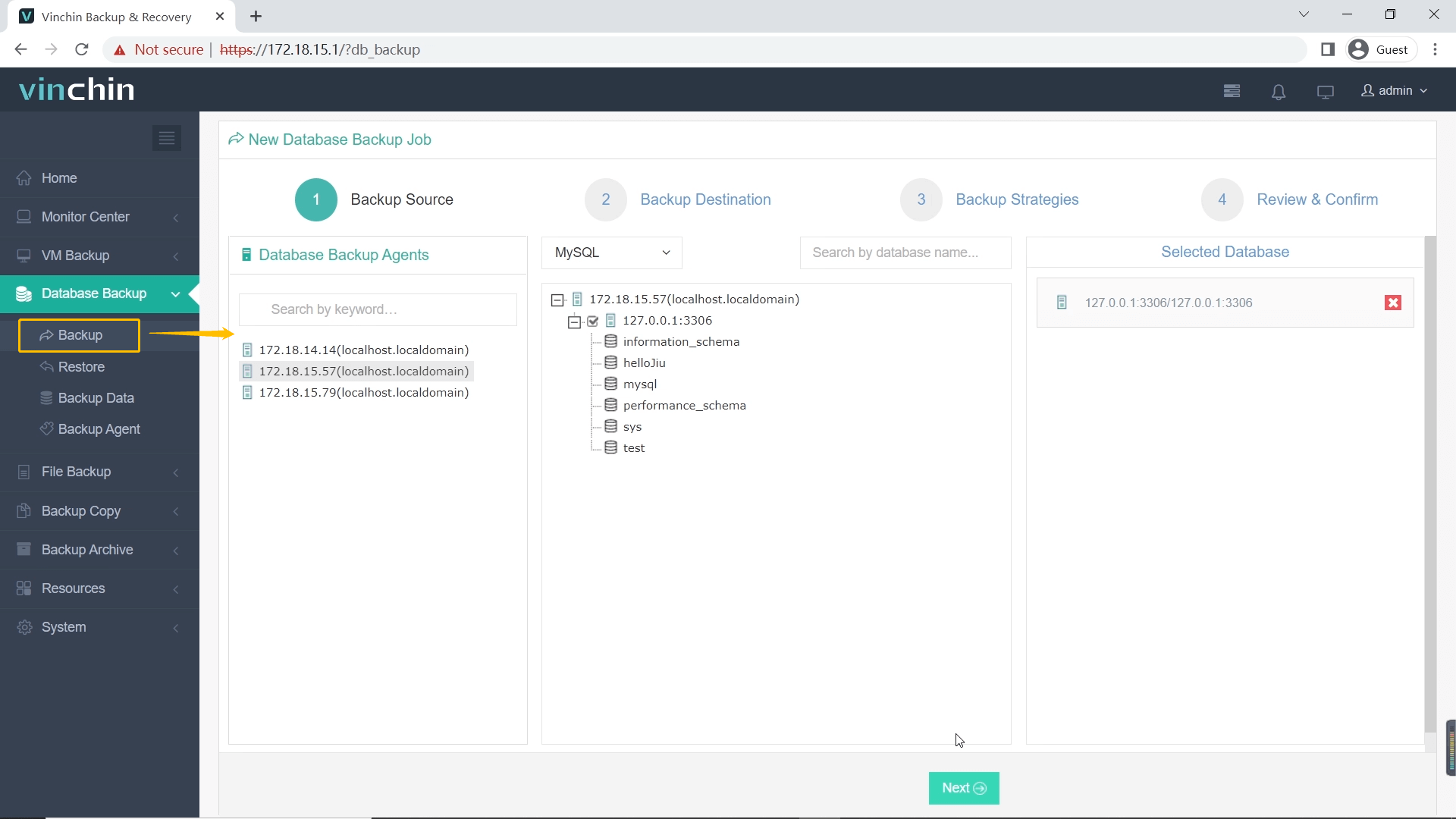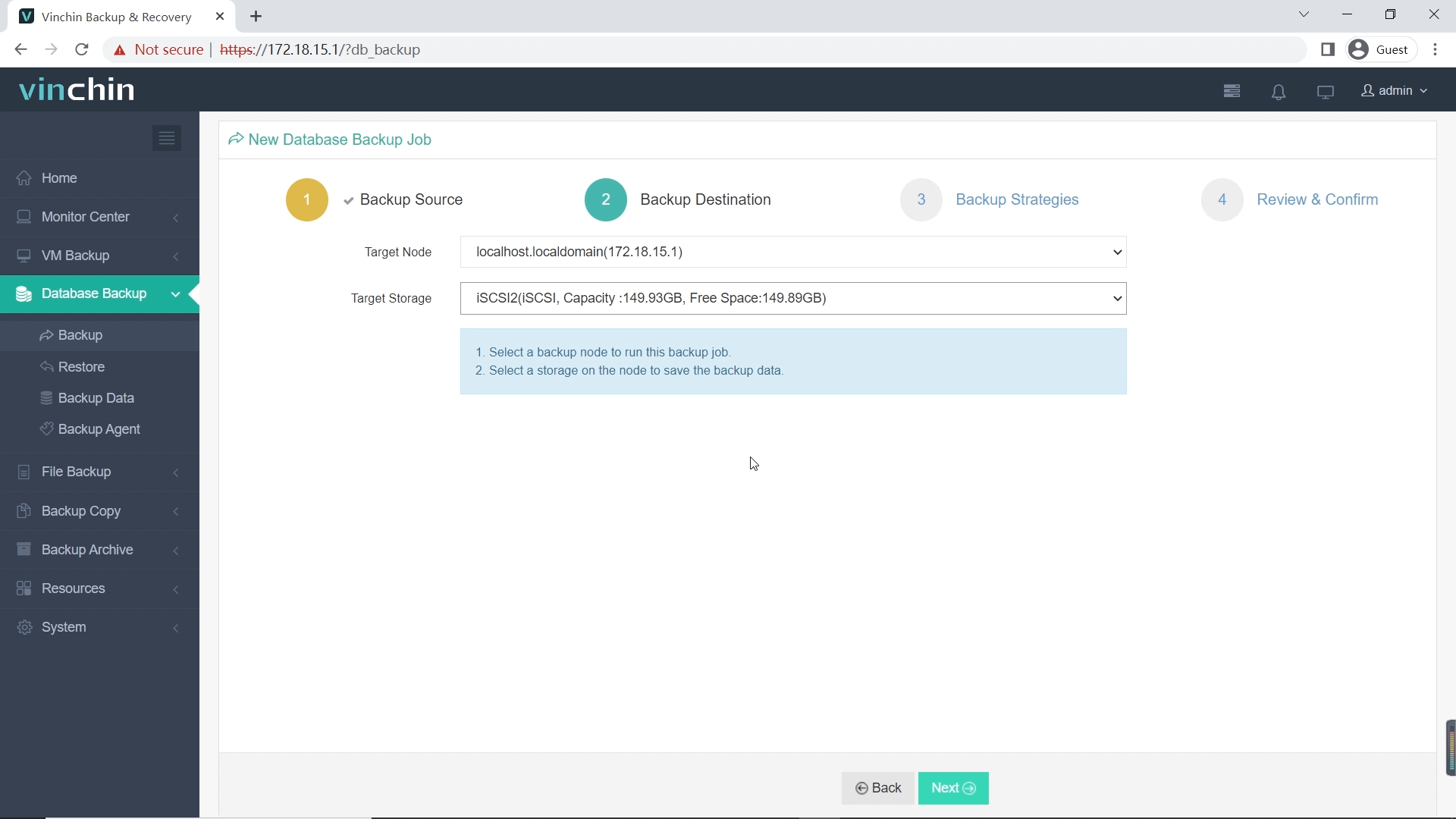-
Understanding MySQL Users, Passwords, and Privileges
-
Why Back Up MySQL Users and Passwords?
-
Method 1: Back Up MySQL Users and Passwords with mysqldump
-
Method 2: Back Up MySQL Users and Passwords Using SQL Queries
-
How to Restore MySQL Users and Passwords Safely?
-
Enterprise-Level Backup Solution: Vinchin Backup & Recovery for MySQL Environments
-
FAQs About Backing Up MySQL Users & Passwords
-
Conclusion
Imagine restoring your MySQL database after a crash—only to find that none of your applications can connect. Why? Because user accounts or their passwords are missing. For IT operations teams, backing up MySQL users and passwords is just as important as backing up data itself. If you skip this step, you risk downtime during migrations or disaster recovery. In this guide, we’ll explore why these backups matter, how MySQL manages users internally, and step-by-step methods to back up—and restore—MySQL users and passwords safely.
Understanding MySQL Users, Passwords, and Privileges
Before diving into backup techniques, it helps to know how MySQL handles authentication. Every user who connects must have an account defined in the mysql system database. The most important table here is user, which stores usernames, password hashes (not plain-text passwords), hostnames allowed for login (like localhost or %), plus global privileges such as SELECT, INSERT, or GRANT OPTION.
Other tables in the mysql database manage more granular permissions:
db: Database-level privileges
tables_priv: Table-level privileges
columns_priv: Column-level privileges
procs_priv: Stored procedure/function privileges
MySQL supports different password hashing plugins (like mysql_native_password or caching_sha2_password). This affects how password hashes are stored—and can impact compatibility when restoring across versions. Without these user records and their grants intact, no one—including automated apps—can access your databases.
Why Back Up MySQL Users and Passwords?
Losing user accounts or their privileges can halt business operations fast. Even if you restore all application data perfectly but forget about users or grants, connections will fail until you rebuild those accounts by hand—a time-consuming process prone to errors.
Backing up users and passwords lets you:
1. Migrate servers without re-entering every account manually.
2. Recover quickly from accidental deletions or server crashes.
3. Audit access rights for compliance requirements.
4. Save time during upgrades by avoiding manual privilege recreation.
You might wonder: “Why not just back up everything?” Restoring the entire mysql database works only if source and target servers run identical MySQL versions; otherwise schema mismatches may cause errors. That’s why targeted backups of user accounts are so valuable.
Method 1: Back Up MySQL Users and Passwords with mysqldump
The built-in tool mysqldump is often used for logical backups in MySQL environments of all sizes.
For many admins new to this task, starting simple makes sense:
To export only the user table—which contains all account names plus hashed passwords—run:
mysqldump -u root -p mysql user > user_table_backup.sql
This command prompts for your password securely before exporting just the user table into a SQL file.
If you want a full picture of all privilege assignments—not just logins—export every relevant table from the mysql system database:
mysqldump -u root -p mysql > mysql_db_backup.sql
This includes tables like db, tables_priv, etc., capturing detailed permission settings alongside usernames.
Method 2: Back Up MySQL Users and Passwords Using SQL Queries
Sometimes you need more flexibility than mysqldump offers—for example when migrating only selected accounts between servers or auditing specific grants without touching others.
A common approach is generating portable GRANT statements that recreate both users and their permissions elsewhere:
mysql -u root -p -BNe "SELECT CONCAT('\'',user,'\'@\'',host,'\'') FROM mysql.user WHERE user NOT IN ('root','mysql.sys')" | \
while read userhost; do
mysql -u root -p -BNe "SHOW GRANTS FOR $userhost" | sed 's/$/;/; s/\\\\/\\/g'
done > grants.sqlHere’s what happens step by step:
1. The first command lists all non-root/system users in 'username'@'hostname' format.
2. For each entry found, it runs SHOW GRANTS FOR ..., extracting exact permission statements per account.
3. Output lines are cleaned up then saved into grants.sql.
You can adjust which users get exported by editing the WHERE clause—for example excluding test accounts—or filter by hostname patterns if needed.
Password hashes appear inside generated CREATE USER/ALTER USER statements—not raw passwords—but restored accounts will authenticate exactly as before unless hash formats differ between source/target systems.
How to Restore MySQL Users and Passwords Safely?
Restoration steps depend on how you created your backup file—but always follow best practices around version compatibility!
If you used mysqldump to export either just the user table or whole mysql DB:
mysql -u root -p mysql < user_table_backup.sql
or
mysql -u root -p mysql < mysql_db_backup.sql
After importing data directly into live grant tables always run:
FLUSH PRIVILEGES;
This reloads permission info so changes take effect immediately without restarting services.
If instead you exported portable GRANT statements via shell script above:
mysql -u root -p < grants.sql
Again follow up with FLUSH PRIVILEGES unless already included at end of script output file.
Enterprise-Level Backup Solution: Vinchin Backup & Recovery for MySQL Environments
For organizations seeking robust protection beyond native tools, Vinchin Backup & Recovery delivers an enterprise-grade solution tailored for today’s diverse database infrastructures—including comprehensive support for MySQL alongside Oracle, SQL Server, MariaDB, PostgreSQL, PostgresPro, and MongoDB environments. As a professional platform designed specifically for critical workloads like yours, Vinchin Backup & Recovery enables seamless batch database backup operations while offering features such as incremental backup strategies tailored to supported databases including MySQL itself; flexible data retention policies including GFS retention options; multiple levels of data compression; scheduled backups; ransomware protection; cloud/tape archiving integration; instant point-in-time recovery capabilities; deduplication technology; restore-to-new-server workflows—all managed through a single intuitive web console interface.
With Vinchin Backup & Recovery’s streamlined process for safeguarding your MySQL environment:
Step 1: Select the MySQL database to back up

Step 2: Choose your preferred storage destination

Step 3: Define custom backup strategies according to organizational policy needs

Step 4: Then submit your job with one click

This simplicity ensures even complex enterprise deployments remain protected with minimal administrative overhead while maximizing reliability through advanced automation features behind-the-scenes.
Trusted globally by thousands of enterprises—with top industry ratings—Vinchin Backup & Recovery offers a fully featured free trial valid for 60 days so you can experience its power firsthand risk-free! Click below to download now.
FAQs About Backing Up MySQL Users & Passwords
Q1: Can I migrate only certain application-specific users while leaving others untouched?
A1: Yes—you can filter specific usernames when generating GRANT statements using tailored SQL queries.
Q2: What should I do if my company uses external authentication plugins like LDAP?
A2: You must also back up plugin configuration files outside of standard grant tables since external auth relies partly on OS/service settings.
Q3: How do I ensure password hashes remain compatible across different versions?
A3: Check which authentication plugin each account uses (plugin column in mysql.user) then verify support exists on destination server before restoring.
Conclusion
Backing up “MySQL backup users and passwords” ensures smooth migrations while protecting against costly outages caused by lost credentials or broken permissions chains—even across complex multi-server deployments! Whether using native tools like mysqldump/scripts—or automating everything through Vinchin—you’ll keep business-critical access under control at all times.
Share on:







